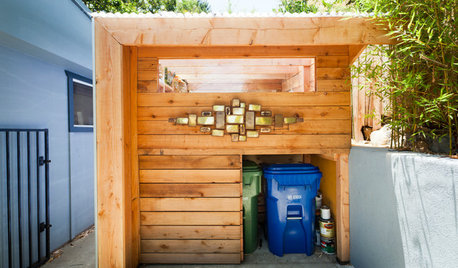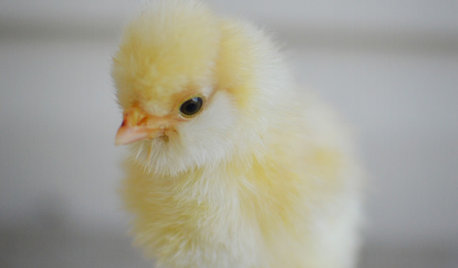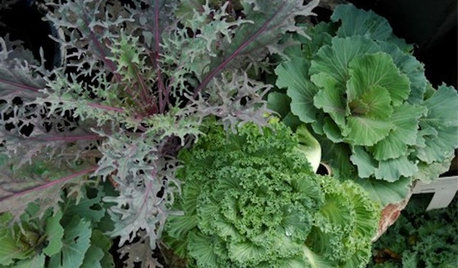Raccoons: what to do with them
creekweb
11 years ago
Related Stories

HOUSEKEEPINGWhat's That Sound? 9 Home Noises and How to Fix Them
Bumps and thumps might be driving you crazy, but they also might mean big trouble. We give you the lowdown and which pro to call for help
Full Story
LIFEHow to Outsmart Backyard Critters
Learn to think like a raccoon, skunk or squirrel to keep your home safe and your garden intact
Full Story
CURB APPEALHouzz Call: How Do You Hide Your Trash?
No one wants to see those trash and recycling bins. So where do you stash them while you wait for the garbage truck? Show us your designs!
Full Story
PETSWhat You Need to Know Before Buying Chicks
Ordering chicks for your backyard coop? Easy. But caring for them requires planning and foresight. Here's what to do
Full Story
CONTAINER GARDENS7 Deer-Resistant Flowers for Your Summer Containers
Grow these as protection for edibles or just for their colorful beauty — deer might not like them, but everyone else will
Full Story
GARDENING GUIDESBackyard Birds: Invite Entertaining Hummingbirds Into Your Garden
Hummingbirds — unique to the Americas — zip through open landscapes seasonally or year-round. Here’s how to attract them
Full Story
CONTAINER GARDENSHappy Houseplants, Happy People
Potted plants add life and beauty to a room. Learn easy ways to keep them healthy
Full Story
LIFEThe Polite House: How Can I Tell a Construction Crew to Pipe Down?
If workers around your home are doing things that bother you, there’s a diplomatic way to approach them
Full Story
WINTER GARDENINGGreat Design Plant: Ornamental Cabbage and Kale
Yes, you can actually eat them. Or you can just marvel at their striking, unusual foliage during all four seasons in the garden
Full Story
LIGHTINGWildlife-Sensitive Ways to Light a Coastal Landscape
Reduce harm to land and sea creatures by choosing the right light sources and placing them thoughtfully
Full StorySponsored
Columbus Area's Luxury Design Build Firm | 17x Best of Houzz Winner!
More Discussions






ltilton
lucky_p
Related Professionals
West Milford Landscape Architects & Landscape Designers · South Elgin Landscape Architects & Landscape Designers · West Chester Landscape Architects & Landscape Designers · Roxbury Crossing Landscape Architects & Landscape Designers · Peabody Landscape Contractors · Brandon Landscape Contractors · Brooklyn Park Landscape Contractors · Broomfield Landscape Contractors · Cincinnati Landscape Contractors · Lady Lake Landscape Contractors · Mission Viejo Landscape Contractors · Newnan Landscape Contractors · Old Saybrook Landscape Contractors · Pleasant Prairie Landscape Contractors · Westford Landscape Contractorsglib
lucky_p
ltilton
Dan.NY
creekwebOriginal Author
chuck60
ltilton
alan haigh
creekwebOriginal Author
bruce2288
ltilton
fruitnut Z7 4500ft SW TX
franktank232
calistoga_al ca 15 usda 9
bennylafleur
olpea
creekwebOriginal Author
olpea
capoman